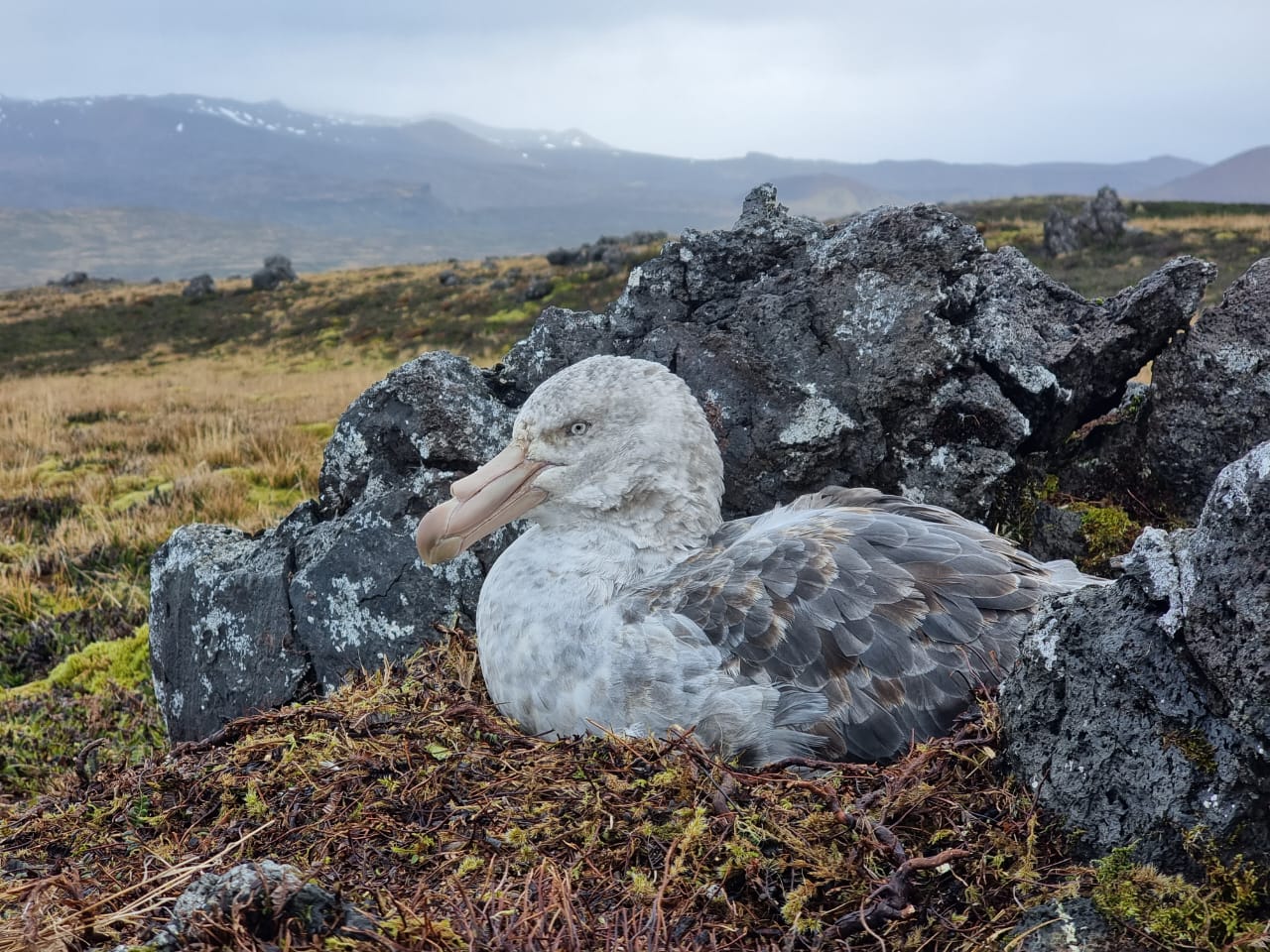
A Northern Giant Petrel incubating on Marion Island, August 2023, photograph by Michelle Risi
Albert Snyman (Southern African Foundation for the Conservation of Coastal Birds, Cape Town, South Africa) and colleagues have published in the journal Polar Biology on 297 pelagic seabirds admitted to a rehabilitation centre in South Africa over a 25-year period. Three quarters were members of the order Procellariiformes. Eight ACAP-listed species totalled 138 individuals (46%); 21 of these were albatrosses, with Black-browed Thalassarche melanophris and Shy T. cauta Albatrosses the most abundant.
The paper’s abstract follows:
Seabird species that breed on remote islands in the southern and northern hemispheres are occasionally seen in the continental shelf waters of South Africa. Most are only seen at sea; however, weak, oiled, or injured individuals found on land or on fishing vessels are occasionally admitted to rehabilitation centres. From 1993 to 2017 (25 years), the Southern African Foundation for the Conservation of Coastal Birds (SANCCOB) admitted 297 southern and northern hemisphere remotely-breeding seabirds from 35 species. This represents an average of 12 birds per year, ranging from 0 to 32. The most frequently recorded families were: Procellariidae (198 individuals, 67%), Spheniscidae (29 individuals, 10%), Stercorariidae (22 individuals, 7%), and Diomedeidae (21 individuals, 7%). The three most common species corresponded to the largest Procellariidae species: southern giant petrel (Macronectes giganteus, 49 individuals, 16%), northern giant petrel (Macronectes halli, 34 individuals, 11%), and white-chinned petrel (Procellaria aequinoctialis, 34 individuals, 11%). The majority of birds were admitted due to debilitation (61%) or injury (21%). Of the 185 birds for which the outcome of rehabilitation was recorded, 39% survived to be released back into the wild.”
With thanks go Katta Ludyina.
Reference:
Snyman, A., Vanstreels, R.E.T., Parsons, N.J. & Ludynia, K. 2023. Visitor and vagrant seabirds admitted for rehabilitation in South Africa, 1993–2017. Polar Biology doi.org/10.1007/s00300-023-03186-w

 Français
Français  English
English  Español
Español